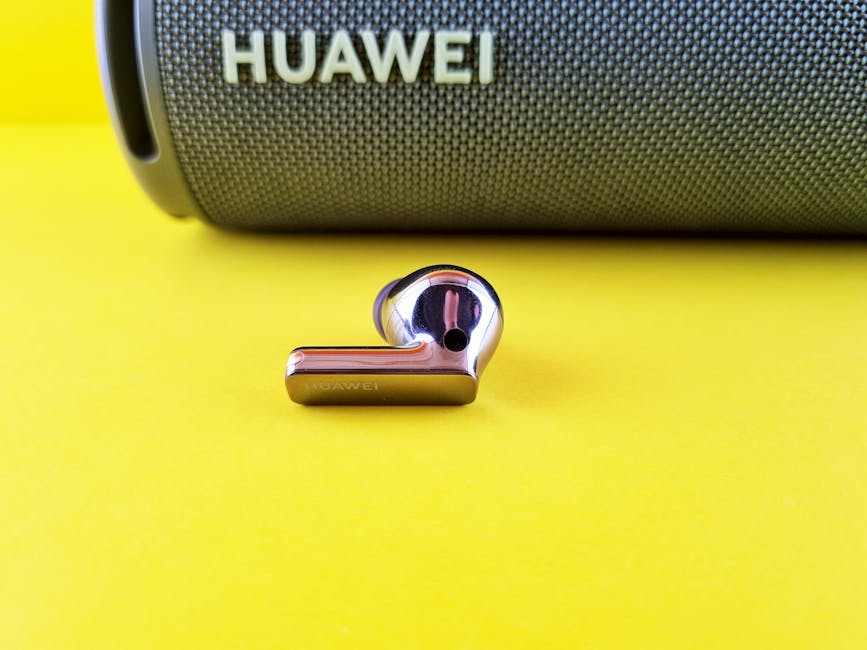Huawei Introduces GovTech1.0 Framework to Propel Government Digital Transformation
Huawei has unveiled its innovative GovTech1.0 framework, a strategic initiative aimed at accelerating digital transformation for governments across the Middle East and Central Asia. With the growing importance of technology as a driver for economic progress, this blueprint offers tailored solutions designed to fast-track government modernisation, aligning with rapid advancements in connectivity, artificial intelligence (AI), and data management. The announcement, made by Allen Tang, President of Huawei’s ICT Marketing & Solution Sales Department in the region, marks a key milestone in the ongoing push for smarter and more efficient governance.
Foundational Pillars of the GovTech 1.0 Framework

Pexels
The GovTech1.0 framework is built upon four groundbreaking pillars: Application Intelligentization, Data Harmonization, Platform Standardization, and Network Broadbandization. These components work together to empower government agencies to adopt cutting-edge technologies for enhanced productivity and decision-making capabilities. By leveraging Huawei’s expertise in connectivity, cloud solutions, and advanced computing, the framework seamlessly integrates robust infrastructures with innovative AI-driven tools. This offers governments smarter methods of managing public services, ensuring effective emergency response systems, and driving economic growth through digital advancements.
Huawei’s Global Digital and Intelligence Index (GDII) provides a data-driven approach to evaluating digital progress and opportunities for growth. The index analyzes 90 countries across key parameters such as connectivity, computing, data, talent, and innovation. Notably, nations like the UAE, Saudi Arabia, Kazakhstan, and Uzbekistan have showcased remarkable progress, investing in critical technologies such as cloud infrastructure, broadband networks, and AI innovations to propel economic development.
Emerging Technologies and Regional Impact

Pexels
Advanced technologies—including Wi-Fi 7, IPv6, and SRv6—are playing a pivotal role in reshaping digital capabilities in the region. These innovations foster more robust and secure networks, laying the groundwork for scalable solutions in governance and infrastructure development. For example, Saudi Arabia’s Vision 2030 initiative, which focuses on economic diversification, has seen Huawei collaborating with national operators to deploy intelligent management systems and energy-efficient networks. These actions are positioning the Kingdom as a leader in smart connectivity and digital transformation.
Moreover, the adoption of AI is revolutionizing public services by incorporating smart features that significantly enhance operational efficiency. From AI-powered platforms to large-scale data models, Huawei emphasizes the need for secure, agile, and end-to-end solutions capable of supporting multiple frameworks for automation and quick deployment. Middle Eastern and Central Asian countries are actively working on AI-driven initiatives, including the development of AI research centers, governance structures, and versatile cloud-based solutions that integrate with a variety of industries.
A Path Toward Secure and Sustainable Innovation

Pexels
Huawei underscores the importance of establishing strong technological foundations for sustained digital growth. By prioritizing secure systems, open AI platforms, and scalable networks, governments can address challenges while fully embracing digital transformation. Tang emphasized that these innovations are not only enhancing governance but also driving economic resilience and positioning nations as leaders in the global digital economy. The integration of broadband networks, AI tools, and interconnected systems is enabling governments to efficiently manage resources and accommodate the changing needs of their populations.
The GovTech1.0 framework serves as a testament to Huawei’s commitment to empowering governments through technological excellence. As countries in the Middle East and Central Asia continue to refine their digital transformation strategies, Huawei’s solutions offer a powerful roadmap for achieving sustainable and effective progress in governance, public services, and beyond.

